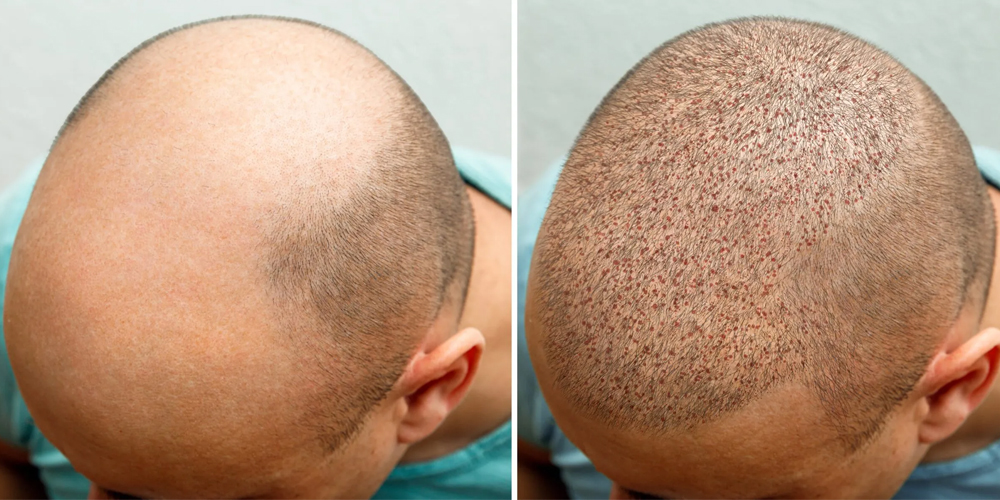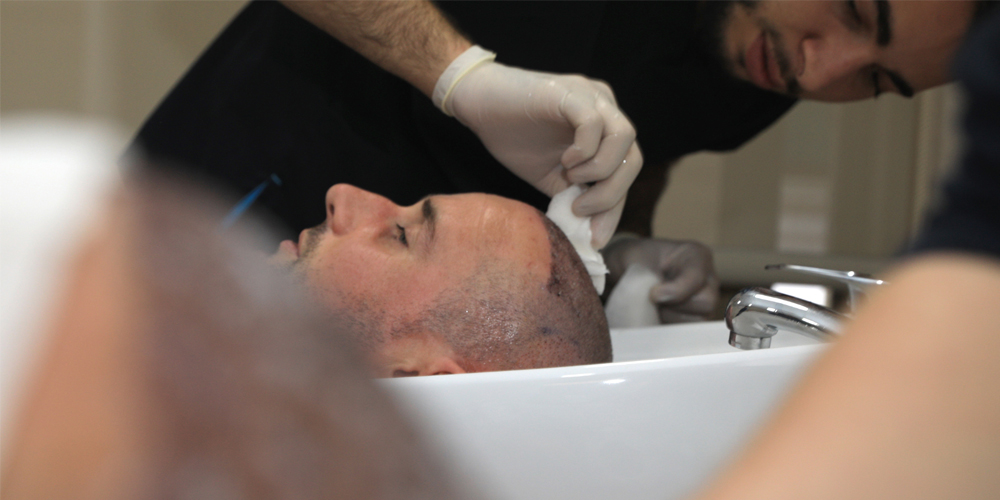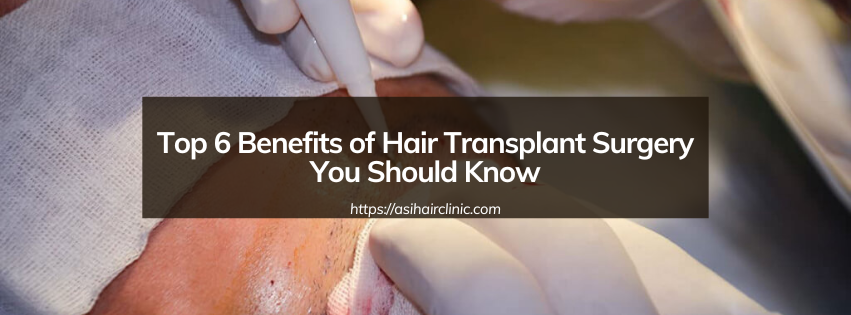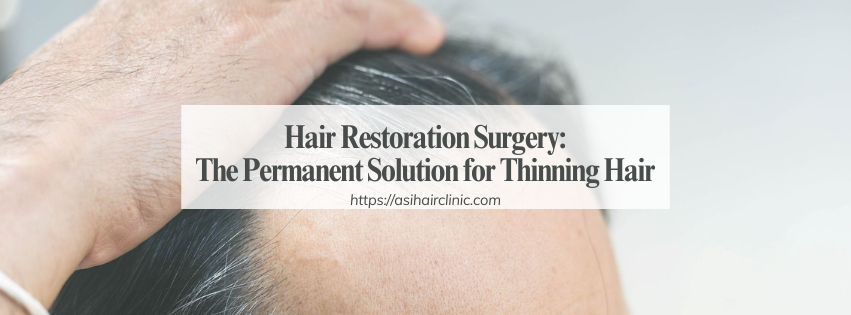Hair Transplant Timeline: Step-by-Step
Understanding the hair transplant timeline is paramount for anyone considering this transformative procedure. Hair loss can significantly affect self-esteem and overall quality of life, but with advanced techniques in hair transplantation, individuals now have a reliable solution to regain their confidence and appearance. This comprehensive guide will take you through every phase-from the initial consultation through post-operative care, offering insights that empower you to make informed decisions on your journey towards a fuller head of hair.
1. Understanding the Initial Consultation and Diagnosis
The first step in the hair transplant timeline is the initial consultation with a qualified surgeon. This face-to-face meeting sets the stage for your hair restoration journey. It is essential to approach this session with an open mind and a clear understanding of what to expect.
1.1. Detailed Hair and Scalp Examination
During your consultation, the surgeon will conduct a thorough examination of your hair and scalp. This includes assessing the extent of hair loss and the pattern in which it is occurring. The examination involves close observation of both the donor area, where hair follicles will be harvested, and the recipient area, where those grafts will be placed.
Understanding the condition of your scalp is crucial. Factors such as inflammation, scarring, or other underlying conditions can affect the success of the transplant procedure. The surgeon may even take photos for documentation and analysis, which will assist in planning the surgery and predicting outcomes.
Being proactive during this examination can significantly enhance the chances of success. Engage in conversation about any medications you're taking and share any concerns regarding previous hair loss treatments. This level of communication will help your surgeon tailor the procedure to suit your individual needs.

1.2. Discussion of Hair Transplant Techniques
Next, you’ll have a detailed discussion about the various hair transplant techniques available. The two most common methods are Follicular Unit Transplantation (FUT) and Follicular Unit Extraction (FUE).
In FUT, a strip of skin containing hair follicles is removed from the donor area, while FUE involves harvesting individual hair follicles one at a time. Each method has its advantages and disadvantages, depending on your specific hair loss patterns and personal preferences.
FUE is generally considered less invasive, leading to quicker recovery times and minimal scarring, while FUT often yields a higher number of grafts in a single session. Understanding these nuances will allow you to make an informed choice that aligns with your goals.
1.3. Assessment of Hair Goals and Expectations
Perhaps one of the most significant aspects of the consultation is discussing your hair goals and expectations. Open communication is vital as unrealistic expectations can lead to disappointment.
Your surgeon will explain the limitations of the procedure and help you understand what’s attainable based on your hair condition. Setting realistic expectations ensures that you are mentally prepared for the journey ahead.
It's also beneficial to visualize results. Surgeons often use software to simulate potential outcomes based on the planned design for your hairline. This provides an additional layer of understanding and helps manage your expectations effectively.
1.4. Pre-Operative Instructions
Once you’ve decided to proceed, the surgeon will provide you with pre-operative instructions designed to prepare you for the surgery. These instructions typically include advice on avoiding certain medications, alcohol, and smoking.
You may also be guided on how to properly care for your hair and scalp leading up to the operation. Following these pre-operative guidelines is essential to minimize risks and complications, ensuring a smoother surgical experience.
2. Pre-Operative Preparations & Planning
Transitioning into the pre-operative phase is an exciting part of the hair transplant timeline. This segment of your journey is all about preparation-laying the groundwork for a successful surgery.
2.1. Blood Tests & Medical Clearance
Before undergoing the procedure, blood tests and medical evaluations may be required. These assessments ensure that you are physically fit for surgery, identifying any potential health risks that may complicate the process.
This standard practice minimizes risks and gives both you and your surgeon peace of mind. If your tests reveal any underlying issues-such as blood disorders or infections-your surgeon may recommend delaying the procedure until you’re in optimal health.

2.2. Medication Review and Adjustments
During this phase, your surgeon will review your current medications and may suggest modifications. Certain drugs, especially blood thinners or anti-inflammatory medications, could interfere with your body’s healing process or increase the risk of complications.
It’s essential to be honest about all medications and supplements you are taking. Your surgeon's recommendations will aim to create a safer environment for your surgery, promoting faster healing and minimizing post-operative risks.
2.3. Scalp Preparation
Preparing your scalp is another critical aspect of the pre-operative phase. You'll receive specific guidelines on how to clean your scalp and avoid products that may irritate your skin before the surgery.
In some cases, you might need to avoid exposure to the sun and refrain from using hair styling products. Keeping your scalp clean and healthy significantly contributes to the success of the procedure and aids in the healing process afterward.
2.4. Procedure Planning and Design
A key component of the pre-operative preparations is designing your new hairline and determining where the grafts will be placed. The surgeon will consider factors like your natural hair growth pattern, age, and desired aesthetic outcomes.
This meticulous planning ensures that the final result is not only visually appealing but also appears natural. Input from you during this phase is vital, as your preferences are taken into account to create a look that complements your facial features.
3. The Day of the Hair Transplant Surgery
The day of your hair transplant marks a monumental moment in your hair transplant timeline. Proper preparation and mindset are essential as you embark on this transformative experience.
3.1. Anesthesia
On the day of the procedure, local anesthesia will be administered to numb the donor and recipient areas, ensuring that you remain comfortable throughout the surgery. Depending on your needs, a mild sedative may also be provided to help alleviate anxiety, allowing you to relax.
Understanding the anesthesia process can provide reassurance. Many patients report feeling little to no discomfort during the procedure itself, which allows them to focus on the positive changes that lie ahead.
3.2. Hair Follicle Harvesting (FUT or FUE)
The harvesting technique used will depend on your prior discussions with the surgeon. In FUT, a strip of skin is removed from the donor site, while FUE involves extracting individual follicles.
Each technique requires precision and skill, so it's essential to trust your surgeon's expertise. While your chosen method may influence recovery time and scarring, most patients are highly satisfied with the results, regardless of the technique used.

3.3. Creating Recipient Sites
Once the follicles have been harvested, the surgeon will create tiny incisions in the recipient area. These incisions must mimic natural hair growth patterns to achieve a seamless appearance.
The artistry involved in making these incisions cannot be understated. A skilled surgeon will take into account the direction, angle, and density of existing hair to ensure that the newly implanted grafts blend effortlessly.
3.4. Grafts Implantation
After creating the recipient sites, the surgeon will meticulously implant the harvested grafts. This step requires great attention to detail as each follicle is placed in a way that optimizes density and creates a natural look.
Patience is key during this phase, as the careful placement of each graft greatly influences the final aesthetic. Post-surgery, you’ll receive specific aftercare instructions, setting the stage for proper healing and hair growth.
4. Post-Operative Recovery and Healing
Following your hair transplant, the post-operative phase is critical to ensure proper healing and optimal results. Understanding what to expect during this period is essential as it sets the tone for your hair growth journey.
4.1. Initial Days and Discomfort
In the first few days post-surgery, some swelling, redness, and tenderness around the treated area are common. This reaction is a normal part of the healing process and should gradually subside.
Over-the-counter pain relief medication can help mitigate any discomfort. It’s important to follow your surgeon's post-operative care instructions, as they are tailored to support your healing process.
4.2. Scalp Care and Cleaning
Proper scalp care is essential to ensure optimal recovery. Your surgeon will provide specific instructions on how to clean the treated area without causing irritation.
Gentle cleansing, avoiding vigorous rubbing, and refraining from scratching are essential practices to follow. Adhering to these guidelines can prevent infection and promote faster healing.
4.3. Swelling and Crusting
Swelling and crusting around the incisions are normal occurrences that often resolve within days. As your scalp heals, small scabs may form around the grafts, which will fall off naturally as new hair begins to grow.
Patience is key during this phase; while it might be tempting to rush the healing process, giving your scalp time to recover will yield better long-term results.
4.4. Medication Management
Your surgeon may prescribe medications to manage pain, reduce inflammation, and prevent infection. Adhering to this medication regimen is critical for optimal healing and minimizing potential complications.
Communicating openly with your healthcare provider about any unusual symptoms or concerns during your recovery period is essential. Regular follow-up appointments will also allow for a professional assessment of your healing progress.

5. The Hair Growth Journey
After the initial recovery, the hair growth journey truly begins. It is crucial to remain patient and understand the timeline of hair growth following your transplant.
5.1. Initial Hair Shedding (Shock Loss)
In the weeks following your procedure, many patients experience something known as “shock loss”. This refers to the shedding of transplanted hair and is a normal part of the healing process.
While concerning, it’s essential to recognize that this shedding is temporary. This phase is a reaction to the trauma caused by the surgery, but soon enough, new hair will emerge, proving that these initial setbacks are merely stepping stones toward your desired outcome.
5.2. Gradual Hair Growth
As time progresses, you will start to see signs of new hair growth coming from the transplanted follicles-often appearing fine and delicate at first.
This gradual emergence is a promising indication that your follicles are responding well. Over the next several months, the hair will continue to develop, gaining thickness and color.
5.3. Continued Growth and Maturation
Within 12-18 months post-surgery, you should observe continued maturation and growth of the transplanted follicles. During this timeframe, your hair will gradually fill out and take on a more natural appearance.
Monitoring your progress during these months can be incredibly rewarding as you witness the transformation of your hair. Taking photos to document your journey can serve as motivation and affirmation of the choices you've made.
5.4. Ideal Results
By the end of the 12-18 month mark, most patients achieve their ideal results. By this time, the hair density should be significantly improved, and the hairline restored.
Managing expectations throughout this journey is crucial, as individual experiences may vary. Nevertheless, celebrating milestones along the way can reinforce your commitment to self-care and hair health.
6. Long-Term Hair Maintenance and Care
Achieving the desired results from your hair transplant is just the beginning; maintaining those results is equally important. Your ongoing care routine will play a vital role in preserving the health and longevity of your newfound hair.
6.1. Continue Good Hair Hygiene
Maintaining good hair hygiene practices is essential for a healthy scalp and hair. Use gentle shampoos and conditioners that won't irritate your scalp, and avoid harsh chemicals or excessive heat styling tools.
Creating a consistent hair care routine will encourage your hair to thrive post-transplant. Additionally, incorporating nourishing products rich in vitamins and minerals can also contribute to a healthier scalp environment.
6.2. Protect from Sun Exposure
Protecting your scalp from sun exposure is crucial, especially in the early stages of healing. Prolonged sun exposure can lead to skin damage, and thus, is best avoided.
Wearing a hat or using sun-protective hair products when spending extended periods outdoors can safeguard your scalp and newly transplanted hair, helping to maintain their health over time.
6.3. Manage Existing Hair Loss Conditions
If you have underlying conditions contributing to hair loss, it is crucial to address these proactively. Consult with your healthcare provider to formulate a plan for managing any existing hair-related issues.
A holistic approach to hair care can significantly enhance your results. Engaging in lifestyle choices that support hair health-like a balanced diet and stress management-will contribute positively to your overall wellbeing.
6.4. Regular Checkups and Maintenance
Finally, scheduling regular check-ups with your hair transplant surgeon is essential for monitoring the health of your transplanted hair. These follow-up appointments allow the surgeon to assess your progress and address any concerns that may arise.
Regular maintenance ensures that you remain on track for long-term success. Being proactive about your hair health creates a supportive environment for your hair to flourish.
Conclusion
Understanding the hair transplant timeline can empower you on your journey toward restoring your hair. From your initial consultation to the long-term results, each phase plays a pivotal role in shaping your experience and satisfaction with the procedure.
With technological advancements and experienced professionals guiding the way, hair transplantation offers a reliable solution for those facing hair loss. Committing yourself to follow pre-operative instructions, nurturing your scalp during recovery, and maintaining your hair post-transplant will significantly enhance outcomes.
In essence, hair transplantation is not merely a cosmetic change; it is an investment in your confidence and self-image. Embrace the journey, educate yourself, and enjoy the transformation-the road to regaining your hair is one filled with hope and possibilities.
LATEST POSTS








